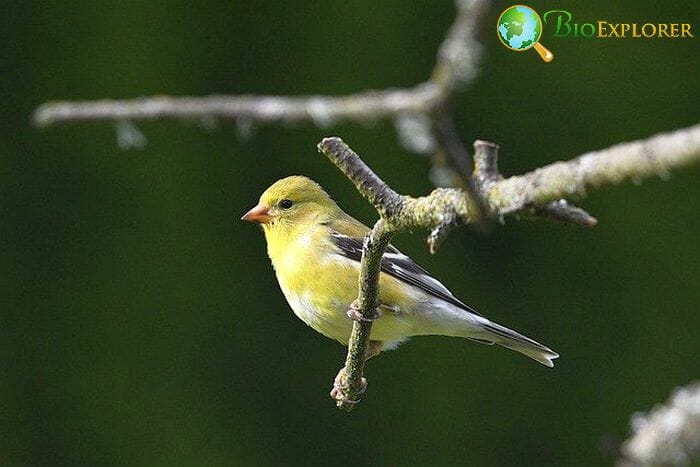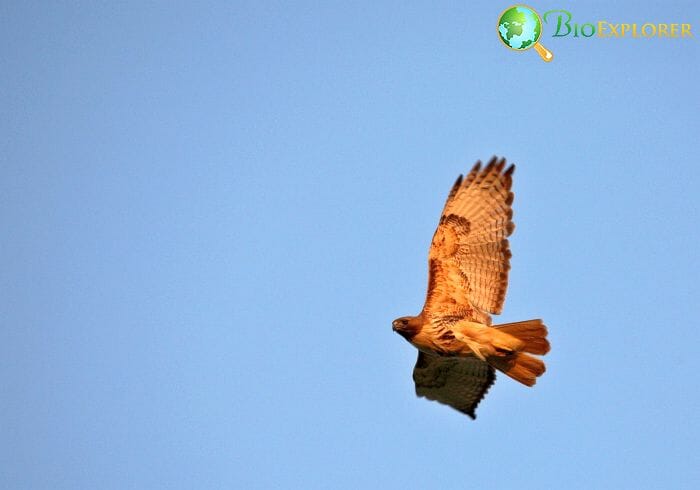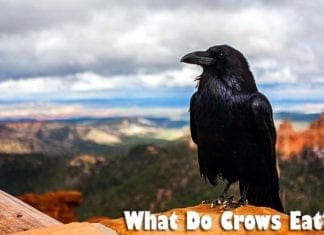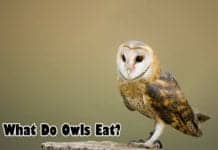
Birds of West Virginia: West Virginia, with its rugged mountains and a variety of hillsides, has various native bird species. Almost 400 bird species can be spotted at different times of the year within the state.
Table of Contents
Natural Habitats in West Virginia
West Virginia has majestic mountains situated in the Appalachian region from Southern New York to Northern Mississippi.

- According to West Virginia Division of Forestry statistics from 2005 and Forest Inventory and Analysis report from 2016, the state has 12 million acres of forest land encompassing 78% of West Virginia, making it the fifth most forested state/territory in the USA after Maine, New Hampshire, American Samoa, and the Northern Mariana Islands.
- The West Virginia forests include mountains, forests (silver maple, sycamore, oak trees, ash trees & more), wetlands (Swamps, shrub swamps, wet meadows, seeps, bogs, and fens), and many underground caves.
- Due to abundant natural resources in West Virginia, it provides valuable wildlife habitat for several animal species, including mammals, birds, and plants.
![]()
Top Birds of West Virginia
This page compiles the top 10 birds resident in West Virginia, pointing out exciting facts about them and wherein the state you are likely to find them.
1. Northern Cardinal
The northern cardinal is a tiny red bird that has been honored as West Virginia’s state bird.

| Animalia | Passeriformes | Cardinalidae | Cardinalis | Cardinalis cardinalis |
- The males and females of this species have distinct plumage compared to the males. For example, the male members tend to have bright red plumage with a black shade.
- The females and juvenile gang members tend to have fewer bright plumage with brown and red wings. The buffy brown hue of the female northern cardinal provides them with camouflage.
- It blends well with their nests, which comes in handy to help the females protect their young ones during the long periods they spend on the nests. Northern Cardinals also tend to breed up to three times per season.
- The northern cardinals get their names from their red plumage, resembling the red robes that Catholic cardinals wear.
- Both the male and female northern Cardinals are great singers who sing all year round. The males are very aggressive and can do whatever it takes to defend their territory.
- Northern cardinals can also be seen in other states, such as Florida, Ohio, and other parts of the USA. Interestingly the Northern cardinal is a state bird for Illinois, Kentucky, Indiana, North Carolina, Ohio, Virginia, and West Virginia!
![]()
2. American Crow
The American crow is considered a common bird in most parts of North America. This is the largest crow in the region, notable for its silky black plumage.

| Animalia | Passeriformes | Corvidae | Corvus | Corvus brachyrhynchos |
- The American crow is a highly social bird that tends to live in groups and uses its numbers to ward off possible predators.
- Most male American crows tend to be larger than females, while juvenile members are almost the size of adults.
- Often confused with the common ravens, the American crows can be distinguished from them by their voice, bill, size, and the shape of their tails and wings.
- The American crows are some of the most intelligent animals that some scientists refer to as feathered apes.
- These birds are believed to have a good memory, apt problem-solving skills, and communicative abilities.
American Crow
Species Name: Corvus brachyrhynchosWhat Do Crows Eat?
![]()
3. Blue Jay
The blue jay is considered a passerine bird native to the eastern parts of North America.

| Animalia | Passeriformes | Corvidae | Cyanocitta | Cyanocitta cristata |
- These birds are notable for their bright blue plumage and pale gray feathers below. These birds also have smooth chests.
- The blue jays are well known for their intelligence. This is no surprise, given that they are classified under the Corvidae Family, which contains some of the most intelligent birds.
- The blue jays also have a complex social system and tight family bonds.
![]()
4. Eastern Bluebirds
Eastern bluebirds are notable for their royal blue plumage on the back and head and reddish-brown feathers on the breast.

| Animalia | Passeriformes | Turdidae | Sialia | Sialia sialis |
- These WV birds are the most widespread of all the existing bluebird species. A rather interesting fact about the eastern bluebirds is that they stay close to their family members.
- A more significant portion of their diet comprises insects and other invertebrates. The other portion is supplemented by wild fruits.
- Eastern bluebird eggs tend to be pale blue most time. In fewer scenarios, the eggs tend to be white. The oldest eastern bluebird documented was 10.5 years old; it was born in 1989 and was found dead in 1999.
- Eastern bluebirds have about two to three successful broods yearly.
- Interestingly Eastern bluebird is the state bird of Missouri.
![]()
5. American Robin
American robins are relatively large songbirds, notable for their long legs and tails.

| Animalia | Passeriformes | Turdidae | Turdus | Turdus migratorius |
- These birds tend to have a black head and gray plumage on the upper parts with orange-colored underparts.
- American robins have unique reasoning abilities but are not necessarily quick at learning things.
- These birds can fly up to 36 miles per hour and fly the fastest when migrating and not flying within the backyard.
- American robins communicate with each other through singing and unique vocalizations.
- Certain factors make American robins well-adapted to thrive in their lifestyles within their habitats.
- For example, these birds have strong legs and muscles to support their running. This helps them powerfully evade predators and comes in handy for them during looking for prey in open habitats.
- American robins can also be found more in Michigan.
![]()
6. Red-bellied Woodpecker
The red-bellied woodpecker is a medium-sized woodpecker, notable for its black and white stripes on its back, mainly described as “zebra-backed“.

| Animalia | Piciformes | Picidae | Melanerpes | Melanerpes carolinus |
- As suggested by its name, the red-bellied woodpeckers tend to have a faint red color on their breast, often hidden by white feathers, making their identification a daunting task.
- This bird primarily feeds on insects, spiders, and a wide variety of arthropods. The red-bellied woodpecker eats plant material and occasionally consumes nesting birds and lizards.
- Interestingly, these birds must protect their eggs and nests from European starlings, who often attempt to take over their nests.
- Similar to their woodpecker relatives, red-bellied woodpeckers tend to display roller-coaster flight patterns.
![]()
7. American Goldfinch
The American goldfinches are small birds endemic to North America, classified in the finch family.

| Animalia | Passeriformes | Fringillidae | Spinus | Spinus tristis |
- Male members of this species are known for their bright yellow plumage, mainly attributed to pigment produced by the plants and seeds they consume.
- Female members tend to be mostly brown with some yellow hue on their bibs. These birds mostly forage on the ground, looking for berries and seeds.
- The American Goldfinch rarely dines on insects. Rater unique, American goldfinches molt their feathers twice a year.
- Molting drains them because of the high nutrient and energy requirement. American Goldfinch can also be seen in the state of Oregon.
Suggested Reading:
What Do Goldfinches Eat? Explore Goldfinch Diets, Hunting & Eating Habits
![]()
8. White-breasted Nuthatch
The white-breasted nuthatch is a tiny, stocky songbird classified under the nuthatch family.

| Animalia | Passeriformes | Sittidae | Sitta | Sitta carolinensis |
- This bird is found in North America, particularly the temperate areas. These birds get their name from how they crack open the seeds they consume.
- The white-breasted nuthatch is known for being monogamous, almost rare for many bird species.
- These birds have loud voices that set them apart. The white-breasted nuthatches cooperate with other birds to form mixed foraging flocks. This form of foraging gives them an added advantage from predation.
![]()
9. Red-winged Blackbird
The red-winged blackbird is one of North America’s most common land birds, classified under the troupial family.

| Animalia | Passeriformes | Icteridae | Agelaius | Agelaius phoeniceus |
- They were classified in this family, given their habit of gathering in large troupes. The oldest banded member of this species lived for a little over 15 years.
- The red-winged blackbird is a very polygamous bird. A male has as many as fifteen females erecting nests in its territory.
- The males are highly aggressive and will do whatever it takes to protect their territory, especially during breeding.
- The red-winged blackbirds are sexually dimorphic, meaning the males and females have different appearances. These blackbirds can also be seen in the State of Missouri.
Suggested Reading:
Black Birds
![]()
10. Red-tailed Hawk
The red-tailed hawk is the largest hawk species that can be seen in West Virginia.

| Animalia | accipitriformes | Accipitridae | Buteo | Buteo jamaicensis |
- Adult members have dark brown plumage above and white feathers below, and brown streaks evident on the lower neck.
- The bird’s upper side of its tail is often red. Juvenile members have similar coloration as adults; the main differences are that their breasts are white, and their upper parts have white streaks.
- These birds have great vision, which helps them when stalking prey.
- Interestingly, the red-tailed hawks can eat prey larger than them. Further, their eye color changes with age. You can spot these birds of prey in the state of Texas.
![]()
In closing, it is worth noting that West Virginia’s mountainous forests and rugged land provide a critical aspect of the state’s natural resources. The habitats within the state are home to a wide array of natural communities.
Some of the biological communities that call West Virginia home are the varieties of resident birds within the state, some of which were studied in the above prompt.
In this regard, it makes sense to draw awareness to the importance of West Virginia’s unique habitats and further encourage communities within the state to advance sustainable practices to maintain them.
![]()


























